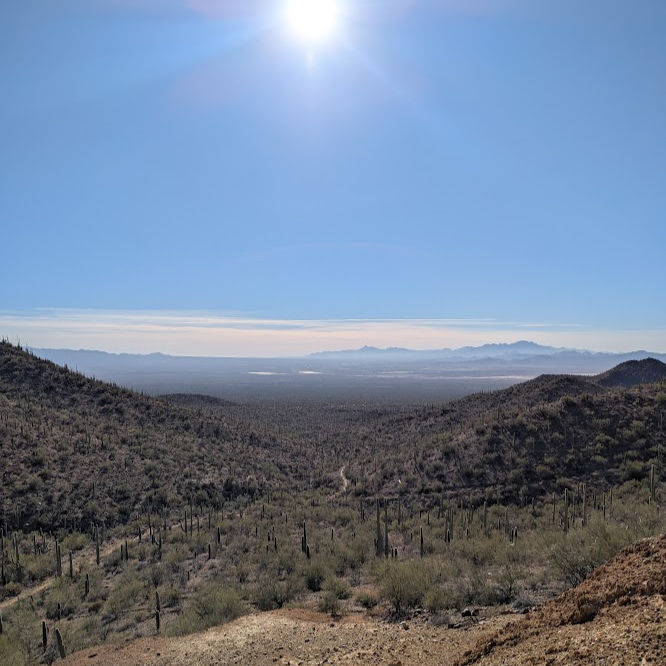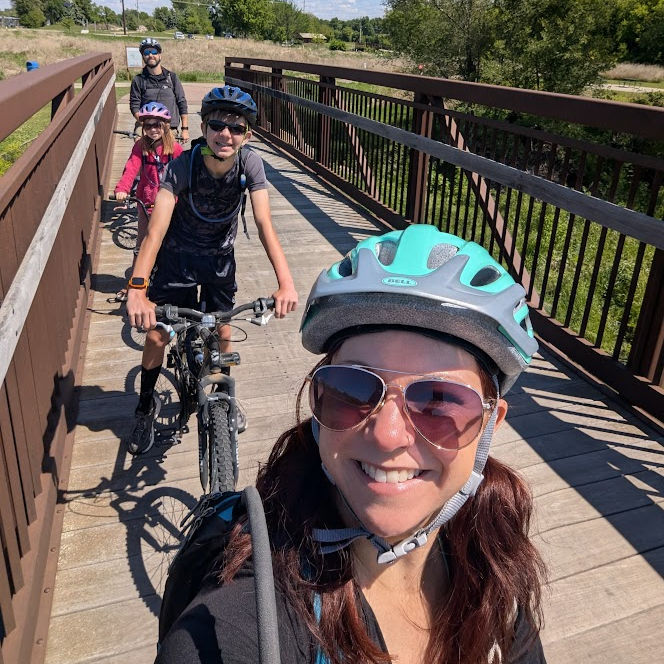How to Prevent Dehydration During Summer Adventures
- Kayla Mathieu

- Jul 8
- 4 min read
Updated: Jul 9

Summer is the season of adventure—trail runs, hikes, backyard projects, and long, sunny days exploring new places. But with all that movement under the sun comes a serious risk that many people overlook until it's too late: dehydration.
As a traveling family that hikes, runs trails, and spends most of our days outdoors, we’ve seen firsthand how quickly dehydration can sneak up on you—and how fast it can be reversed with the right knowledge and tools.
Why Dehydration Deserves Your Attention This Summer

When your body loses more fluids than it takes in—especially during high heat or physical activity—you start to dehydrate. This isn’t just about being thirsty. Dehydration can impact everything from your energy and mood to your heart rate and brain function.
And when you're far from home, hiking in a national park, or on a remote trail run, things can go from uncomfortable to dangerous—fast.
Common Symptoms of Dehydration
Whether you're hiking, mowing the lawn, or running a race, keep an eye out for these warning signs:
Headache or dizziness
Dry mouth or lips
Fatigue or weakness
Muscle cramps
Rapid heartbeat
Dark yellow urine
Nausea or irritability
And if you're a parent, knowing these signs for your kids is just as important—they can crash even faster.
A Real-Life Wake-Up Call: Our Son’s Dehydration Scare

One hot summer afternoon, our son was mowing a friend’s yard when he started feeling off—lightheaded, sick to his stomach, and out of it. We recognized the signs immediately.
We rushed to a nearby gas station and grabbed two Gatorades—one for him to sip, and one to place on the back of his neck to cool his body quickly. We also bought a packet of pickles and a protein bar. Within minutes of getting some fluids, electrolytes, salt, and fuel back in his system, he perked up like a different kid.
That moment reminded us how fast things can spiral—and how quickly the right response can turn things around.
Why Pickle Juice?
Sounds odd, but it works. We learned this trick from a close friend who has POTS (Postural Orthostatic Tachycardia Syndrome)—a condition that makes staying hydrated absolutely essential. She swears by pickle juice, and after seeing the results, we do too.
Here’s why:
High sodium content helps your body retain water
Electrolyte boost replenishes what’s lost through sweat
Muscle cramp relief due to acetic acid triggering reflexes that stop cramping
You can keep a small bottle of pickle juice or pickle popsicles in your cooler or daypack—it’s cheap, compact, and effective.
What To Do If You Get Dehydrated
Stop activity immediately and find shade or a cool area
Sip water or electrolyte drinks slowly (don’t chug—it can cause nausea)
Cool your body with a cold compress or wet rag on your neck and wrists
Replenish salt and sugar with snacks like pretzels, pickles, protein bars, or fruit
Rest until you feel better—don’t try to “push through”
If symptoms worsen—vomiting, confusion, or fainting—it could be heat exhaustion or heat stroke. Seek medical help immediately.
Hiking & Trail Running Hydration Tips

Whether you're summiting a peak or just hitting the local loop, here’s what to pack:
Hydration pack or reusable water bottles (drink small amounts often)
Electrolyte tablets or sports drinks
Pickle juice shots or salty snacks
Cooling towel or small cloth for neck/wrists
High-energy snacks like protein bars or trail mix
Sun protection: hat, sunscreen, and breathable clothing
Even if you're not “thirsty,” make hydration part of your routine. If you're sweating, you're losing more than just water—you're losing sodium and potassium too.
Don’t Wait Until You’re in Trouble
Dehydration can hit faster than you think—especially for kids, athletes, and those with chronic conditions like POTS. But it’s also one of the easiest things to prevent when you’re prepared.
As you hit the road this summer—whether you’re out for a casual hike, pushing your limits on a rugged trail run, or just working hard under the sun—stay ahead of dehydration. Pack smart, pay attention to early signs, and don’t underestimate the power of an ice-cold Gatorade and a few pickles.
Your body—and your summer memories—will thank you.

Essential Hiking Gear
Before you hit the trail, make sure you're prepared with the right gear! We've put together a list of our must-have hiking essentials to keep you safe, comfortable, and ready for adventure.
Note: Some of the links included are affiliate links, which means we may earn a small commission if you make a purchase—at no extra cost to you. We only recommend products we use and love. Thanks for supporting Wandering Past Limits!
Looking for more trail-tested tips for family hiking and RV travel?
Subscribe to our YouTube Channel for real-life adventures, expert interviews, and roadschooling inspiration!
Want more outdoor tips for adventurous families?
✨ Subscribe to our newsletter for practical advice, safety tips, nature-based learning hacks, and travel inspiration straight to your inbox. www.wanderingpastlimits.com

FAQ: Dehydration & Outdoor Safety
How much water should I bring on a hike?
A good rule of thumb is half a liter per hour of moderate activity in moderate temperatures. Double that in high heat or strenuous terrain.
Is water enough, or do I need electrolytes too?
Electrolytes are essential if you're sweating heavily. Water alone can’t replace lost sodium, potassium, and magnesium.
Why is pickle juice good for dehydration?
Pickle juice is high in sodium and contains acetic acid, which helps stop muscle cramps and encourages the body to retain water.
What should I do if someone shows signs of dehydration?
Stop all activity, move to shade, hydrate slowly with fluids and electrolytes, use a cold compress on the neck or wrists, and provide a salty snack. Seek medical help if symptoms worsen.
Can kids get dehydrated faster than adults?
Yes! Children dehydrate more quickly, especially when they’re active outdoors. Encourage regular water breaks and pack salty snacks and electrolyte drinks on every outing.




Comments